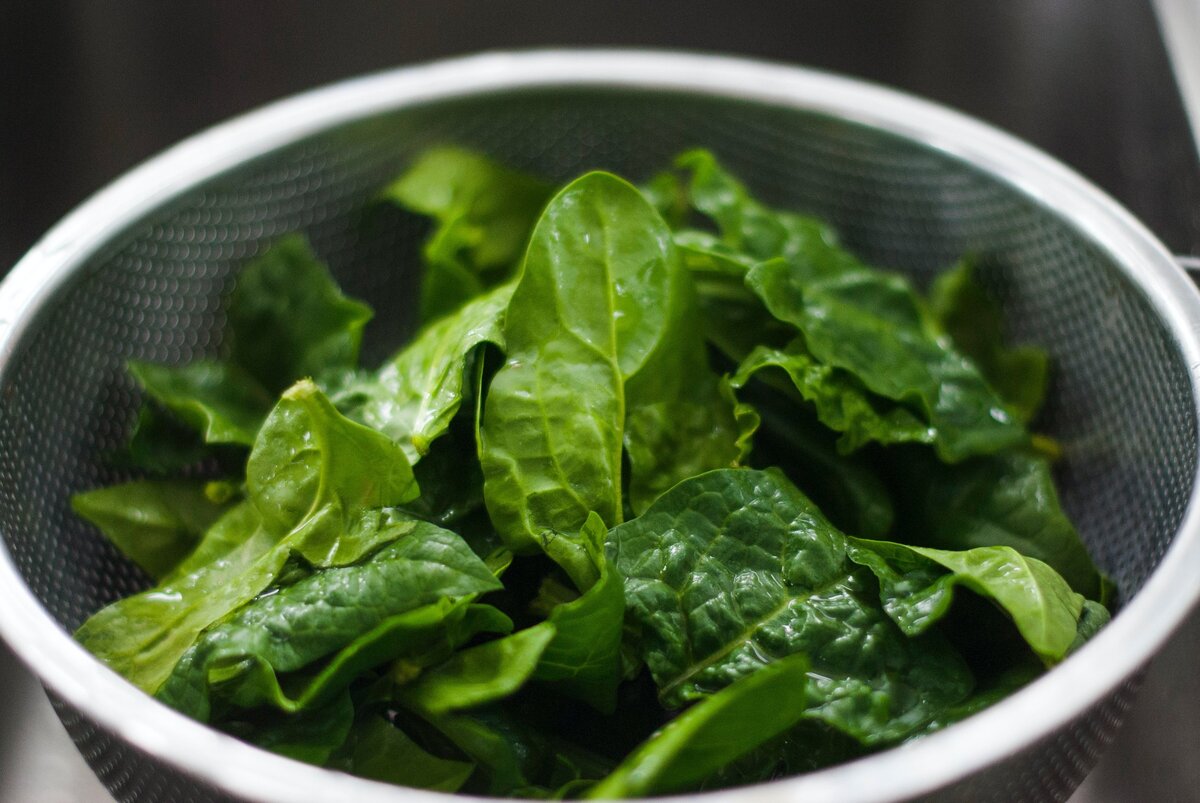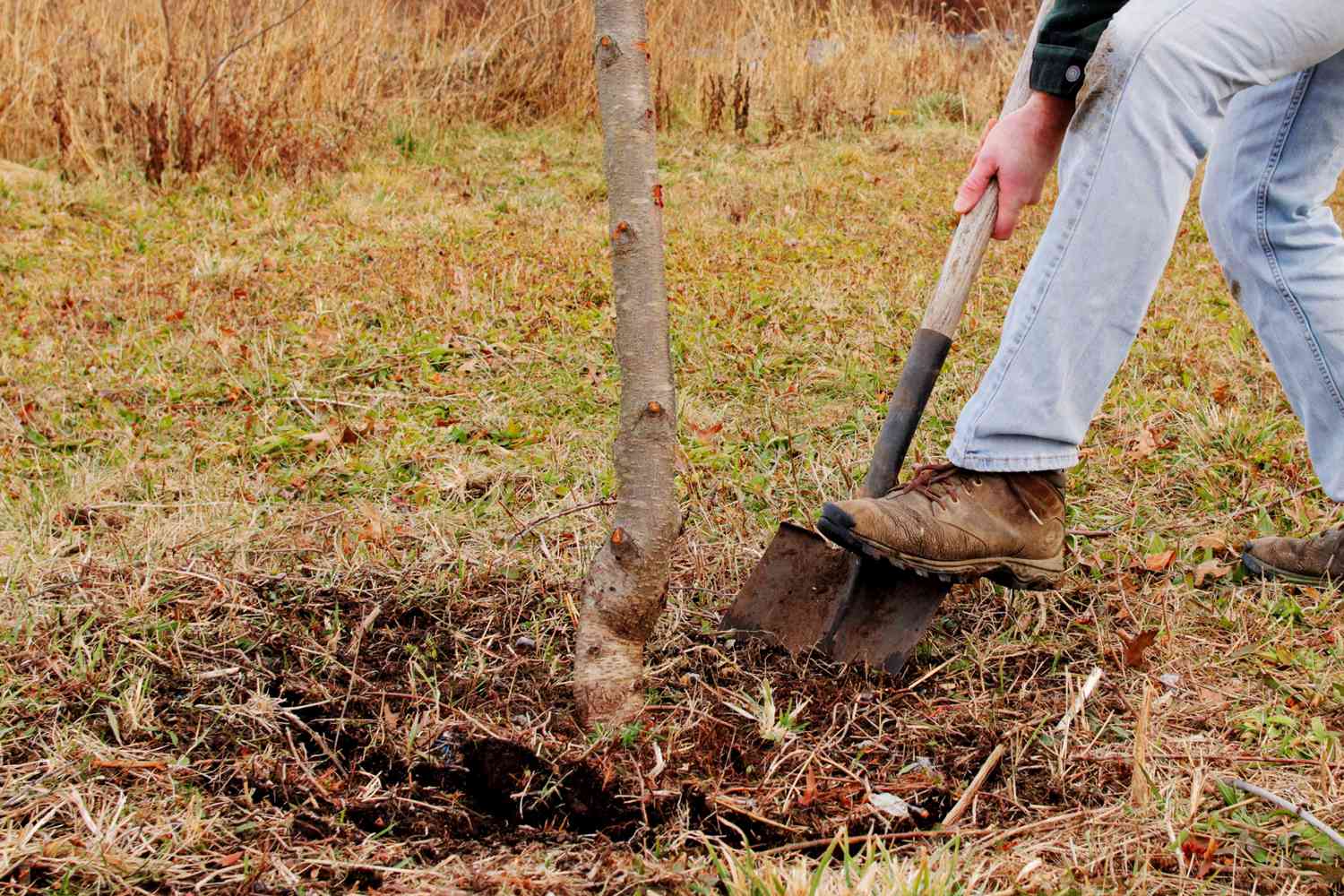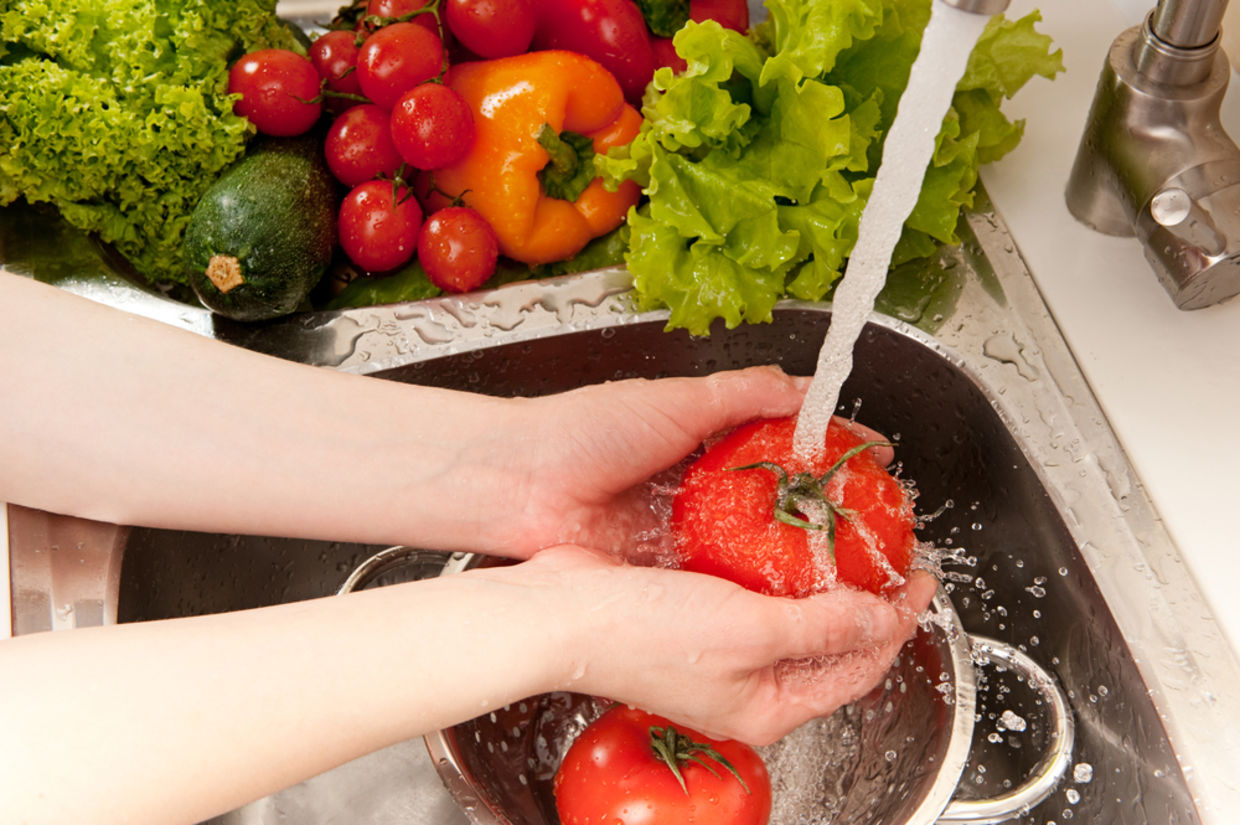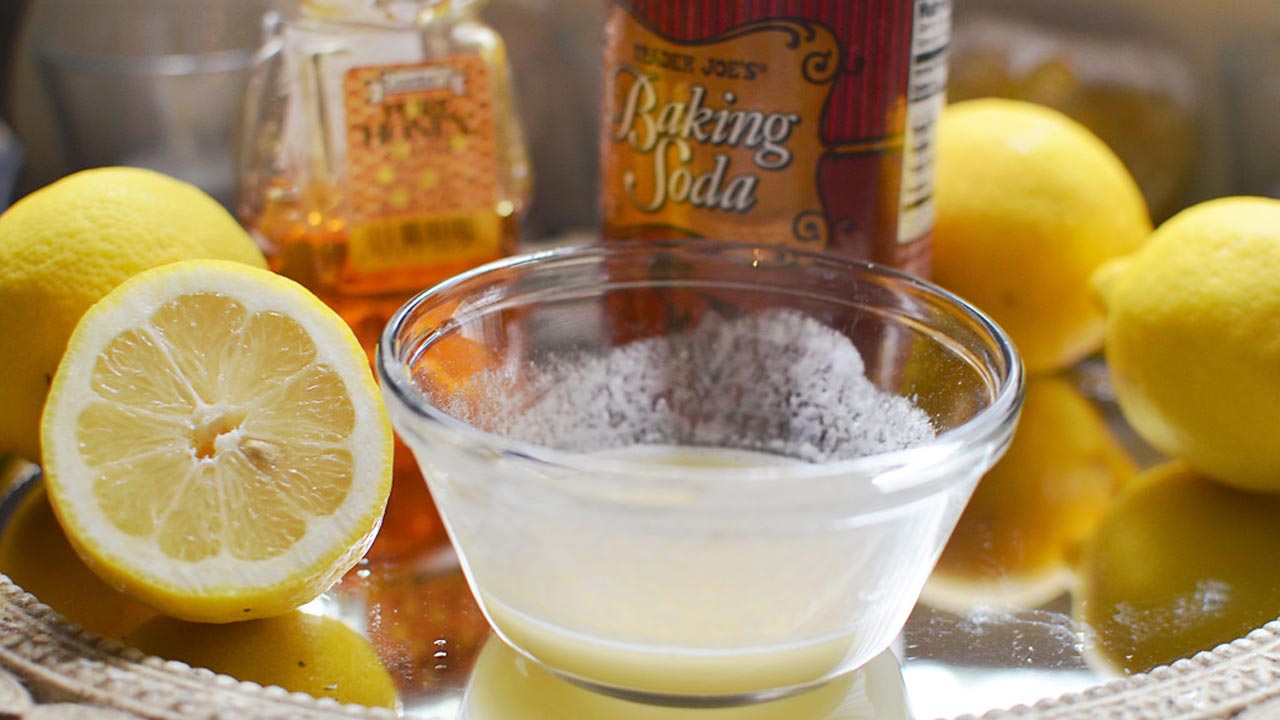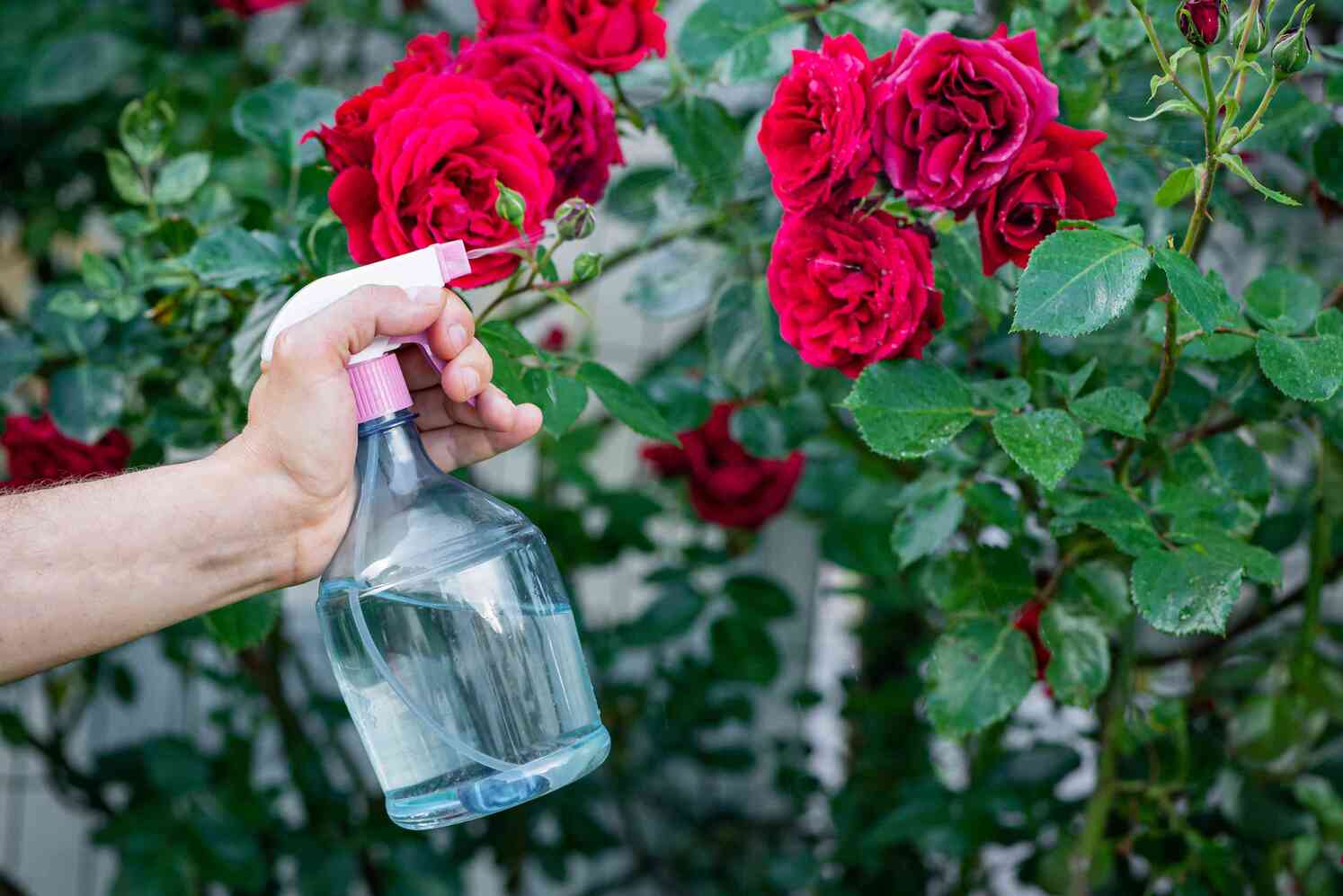Home>Gardening Techniques>DIY Projects>How To Use A Hoe To Remove Weeds


DIY Projects
How To Use A Hoe To Remove Weeds
Modified: January 22, 2024
Learn how to use a hoe for efficient DIY weed removal. Discover useful tips and techniques for tackling weeds in your garden.
(Many of the links in this article redirect to a specific reviewed product. Your purchase of these products through affiliate links helps to generate commission for Chicagolandgardening.com, at no extra cost. Learn more)
Table of Contents
Introduction
Welcome to the world of DIY projects! If you’re a gardening enthusiast, you already know that weeds can be a never-ending battle. They not only compete with your plants for nutrients and sunlight but also create an unsightly appearance in your garden. While there are numerous methods to tackle weeds, one effective and budget-friendly tool that comes to the rescue is a hoe.
A hoe is a simple yet powerful gardening implement designed to cut through the soil, uproot weeds, and loosen it for better aeration. It has been used for centuries by gardeners around the world. Using a hoe is not only an efficient way to remove weeds but can also be a therapeutic and enjoyable activity that allows you to connect with nature.
In this article, we will walk you through the step-by-step process of using a hoe to remove weeds from your garden. Whether you are a seasoned gardener or a beginner, these tips and techniques will help you effectively combat those unwanted plants and maintain a weed-free garden.
Before we delve into the steps, it’s important to understand the different types of hoes available. There are several varieties, including the traditional garden hoe, scuffle hoe, and stirrup hoe, among others. Each type has its own unique design and purpose, so it’s worth exploring which one works best for your specific needs.
Now that you have a brief introduction to the world of hoes and their importance in weed removal, let’s move on to the first step: preparing your garden for weed eradication.
Step 1: Understanding the Hoe
Before you begin using a hoe to remove weeds, it’s essential to familiarize yourself with this versatile gardening tool. While all hoes essentially serve the same purpose, their designs and features can vary.
The common garden hoe consists of a long handle, typically made of wood or metal, attached to a flat or slightly curved blade. The blade can be made from various materials, including steel, iron, or even plastic. The shape and size of the blade determine the hoe’s effectiveness in cutting through the soil and uprooting weeds.
One popular type is the scuffle hoe, also known as a hula hoe or stirrup hoe. It features a looped blade that moves back and forth as you push and pull the hoe. This action cuts through the soil and slices weeds at the roots. The scuffle hoe is particularly useful for larger areas with well-established weeds.
Another type is the draw hoe, which has a straight, flat blade. This type of hoe is great for loosening compacted soil, making it easier to remove weeds. It is ideal for smaller, precise work and maintaining raised beds or containers.
Once you have selected the right hoe for your gardening needs, take some time to understand its features and how to handle it effectively. Familiarize yourself with the weight, balance, and grip of the tool to ensure comfortable and efficient use.
Keep in mind that hoes may require occasional maintenance, such as sharpening the blade. If you notice that the hoe is not cutting through the soil as easily as before, it may be time to sharpen the blade using a file or a sharpening stone. Regular maintenance will ensure the hoe remains in optimal condition for weed removal.
Now that you have a good understanding of the hoe and its variations, it’s time to move on to the next step: preparing your garden for weed removal.
Step 2: Preparing the Garden
Before you start using a hoe to remove weeds from your garden, it’s important to prepare the area properly. This step sets the stage for successful weed removal and ensures that you’re not inadvertently damaging your plants or the soil in the process.
The first task in preparing your garden is to clear away any debris, such as fallen leaves or twigs, from the surface. This will give you a clear view of the soil and make it easier to identify and target the weeds.
Next, you’ll want to moisten the soil slightly to make it easier to work with. Avoid overly wet conditions, as this can lead to compacted soil and make weed removal more challenging. A slightly moist soil will allow the hoe to move smoothly through the earth, making it more effective in uprooting the weeds.
Now it’s time to inspect the garden and identify the weeds you’ll be targeting. Different weeds have different characteristics and growth patterns, so it’s essential to familiarize yourself with the various types that may be present in your garden. This will help you determine the most effective approach for weed removal.
If you have a large area to cover or your garden is heavily infested with weeds, it might be helpful to divide the space into manageable sections. This will allow you to focus on one area at a time, ensuring thorough weed removal without getting overwhelmed.
Lastly, consider protecting your desirable plants by creating physical barriers or using mulch around them. This will help prevent accidental damage from the hoe while targeting the weeds.
By taking the time to prepare your garden properly, you’ll set yourself up for a more efficient and successful weed removal process. Now that you’ve prepared the garden, let’s move on to the next step: identifying and targeting weeds.
Step 3: Identifying and Targeting Weeds
Identifying and targeting weeds is a crucial step in effectively using a hoe to remove them from your garden. Different types of weeds require different strategies for successful eradication.
Start by familiarizing yourself with common weed species in your area. Understanding their growth habits and characteristics will enable you to identify them easily and determine the most efficient way to remove them.
Some common types of weeds include broadleaf weeds, such as dandelions and plantain, and grassy weeds like crabgrass and Bermuda grass. Each type requires a different approach for effective removal.
Once you have identified the weeds in your garden, it’s time to target them specifically. Use a combination of visual inspection and tactile examination to locate the weeds, paying attention to their root systems and their proximity to desirable plants.
When using the hoe, aim to make clean cuts just below the soil surface to sever the weeds from their root systems. This will ensure that the weeds are completely removed and reduce the chances of regrowth.
For smaller, individual weeds, you can use the tip of the blade to target the base of the weed and cut through the roots. Angle the hoe slightly to avoid hitting adjacent plants and focus on precision.
For larger weed infestations, employ a more sweeping motion, using the entire blade of the hoe to cut through multiple weeds at once. Make sure to cover the entire area systematically to avoid missing any weeds.
Remember to work with the hoe in a slicing motion rather than a hacking motion. This will minimize soil disruption and prevent disturbing the roots of your desirable plants.
By identifying and targeting weeds strategically, you’ll maximize the effectiveness of the hoe in removing them from your garden. With this step completed, you’re ready to learn the proper hoe technique in the next step.
Step 4: Proper Hoe Technique
Using the proper hoe technique is key to effectively remove weeds and minimize strain on your body. By following these guidelines, you’ll ensure that you’re using the hoe correctly and maximizing its efficiency.
First and foremost, it’s important to maintain a comfortable and balanced stance while using the hoe. Stand with your feet shoulder-width apart, keeping your back straight and knees slightly bent. This position will provide stability and prevent unnecessary strain on your body.
Grip the handle of the hoe firmly but not excessively tight. This will allow you to have control over the tool while maintaining a relaxed grip. Avoid gripping the handle too close to the blade, as this can limit your range of motion and make it challenging to maneuver the hoe effectively.
When using the hoe, engage your core muscles and use your entire body to generate the force needed to cut through the soil and uproot the weeds. Avoid relying solely on arm strength, as this can lead to fatigue and potential injury.
As you move the hoe through the soil, keep the blade at a shallow angle. This will maximize its cutting efficiency and reduce the risk of accidentally damaging nearby plants or disturbing the soil structure.
Use smooth and deliberate motions to guide the hoe through the soil. Keep the blade parallel to the ground, making gentle horizontal movements to slice through the weed’s roots. Avoid making sudden or jerky motions, as this can cause unnecessary damage and make it harder to control the hoe.
If you encounter resistance while using the hoe, pause and assess the situation before continuing. It’s possible that you’ve hit a rock or encountered a particularly stubborn weed. Take your time to work around the obstacle or make a more precise cut to remove the weed effectively.
Remember to take breaks when needed and listen to your body. Using a hoe can be physically demanding, especially if you have a large area to cover. Regular rest intervals will help prevent fatigue and reduce the likelihood of strain or injury.
By following these proper hoe techniques, you’ll not only make your weed removal tasks more efficient but also ensure that you’re taking care of your body in the process. With this step completed, you’re ready to learn how to remove weeds using the hoe.
Step 5: Removing Weeds with the Hoe
With your hoe technique honed, it’s time to put it into action and start removing those pesky weeds from your garden. Follow these steps to effectively use the hoe to eliminate the weeds:
1. Identify the weeds you wish to remove and carefully approach them with your hoe in hand. Get as close to the base of the weed as possible.
2. Position the hoe blade just below the soil surface, angling it slightly to slice through the roots. Push the hoe forward in a sweeping motion, cutting through the weed and severing it from its roots.
3. Lift the hoe slightly and move it backward, releasing any debris or weeds that have been dislodged. Examine the area to ensure the weed has been completely uprooted.
4. Repeat the process for each weed, working methodically through your garden. Remember to maintain a comfortable stance and use your entire body to generate the force needed to cut through the soil.
5. As you progress, periodically clear away the debris and weeds from the surface to keep your work area clean and ensure you’re effectively targeting the remaining weeds.
6. For larger weed infestations or tough weeds with extensive root systems, you may need to make multiple passes with the hoe to completely remove them. Take your time and be thorough to prevent any regrowth.
7. If you encounter any stubborn or deeply rooted weeds, you can use the hoe as a leverage tool. Position one side of the hoe blade under the weed and gently pry it out, leveraging the weed against the flat side of the blade.
8. After removing the weeds, it’s a good practice to gather them into a pile and dispose of them properly. This helps prevent reseeding and ensures that the weeds do not take root in other areas of your garden.
Remember to take breaks as needed and hydrate yourself throughout the process. Gardening can be physically demanding, and it’s important to listen to your body and avoid overexertion.
With consistent and diligent use of the hoe, you’ll be able to effectively remove weeds from your garden and maintain a clean, weed-free environment. But the work does not end here; let’s move on to the final step: maintaining weed-free soil.
Step 6: Maintaining Weed-Free Soil
Now that you’ve successfully removed weeds using a hoe, it’s essential to implement strategies to maintain weed-free soil in your garden. By incorporating these practices into your routine, you’ll reduce the likelihood of weed growth and make future weed removal tasks less daunting.
1. Mulching: Applying a layer of mulch around your plants and in bare areas of your garden is an effective way to suppress weed growth. Mulch acts as a barrier, preventing weed seeds from germinating and obtaining sunlight. Organic mulch, such as wood chips or straw, also helps improve soil moisture retention and adds nutrients as it breaks down.
2. Crop rotation: Rotating your crops from season to season can help disrupt the life cycles of specific weeds that may be prevalent in your garden. Different plants have varying nutrient requirements, and rotating them can reduce the buildup of weeds associated with specific crops.
3. Regular inspections: Make it a habit to inspect your garden regularly for any signs of weed growth. By identifying and addressing new weed sprouts early on, you can prevent them from establishing deep root systems and spreading throughout your garden.
4. Hand weeding: While a hoe can be efficient for weed removal, there may be times when it’s easier to remove weeds by hand. For delicate or hard-to-reach areas, carefully pull out weeds by hand, ensuring you remove the entire root system to prevent regrowth.
5. Proper watering and fertilization: Maintaining optimal soil moisture and providing adequate nutrition to your desirable plants will help them thrive and create a competitive environment for weeds. Healthy plants are better equipped to outcompete weeds for resources, preventing them from taking hold in your garden.
6. Regular maintenance: Keep your garden tidy by clearing away any debris, fallen leaves, or weeds that may appear. This will minimize potential weed seed sources and make it easier to spot and remove weeds as they emerge.
By incorporating these practices into your gardening routine, you’ll be able to maintain a weed-free environment and reduce the need for extensive weed removal in the future. Remember that weed control is an ongoing process, and regular attention is key to keeping your garden looking its best.
Now that you have completed all the necessary steps for maintaining weed-free soil, take a moment to admire your beautiful garden and reap the rewards of your diligent efforts. Happy gardening!
Conclusion
Congratulations on mastering the art of using a hoe to remove weeds from your garden! By following the step-by-step process outlined in this article, you have learned how to effectively identify, target, and remove weeds using a hoe. With proper preparation, technique, and maintenance, you can maintain a beautiful and weed-free garden that will flourish with your desired plants.
Remember that weed removal is an ongoing process, and it requires regular attention and effort. By incorporating practices such as mulching, crop rotation, regular inspections, and proper watering, you can significantly reduce weed growth and minimize the need for extensive weed removal in the future.
Using a hoe not only allows you to maintain a clean and aesthetically pleasing garden but also provides an opportunity to connect with nature and experience the therapeutic benefits of gardening. So, embrace the tool and enjoy the process of creating and maintaining a weed-free oasis for your plants to thrive.
We hope this comprehensive guide has equipped you with the knowledge and skills to confidently tackle weeds in your garden. Remember that gardening is a journey, and it’s okay to encounter challenges along the way. With determination, patience, and the proper tools, you can overcome any weed-infested situation and create a vibrant and thriving garden that you can take pride in.
Now, it’s time to grab your hoe and get ready to transform your garden into a weed-free haven. Happy gardening!

